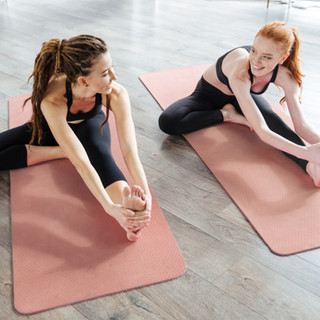
Hamstrings are a well known but muscles but often over looked when training leading to injury; as well as in recovery causing a delay in return to full function.
The hamstrings comprise of 3 muscles that connect the pelvis to the back of the shin; crossing both the back of the hip and back of the knee. As a result of crossing two joints, the hamstrings have 2 main functions compared to the usual one function of other muscles. These include: Bending the knee and straightening the hip. They also also contribute to both the internal and external rotation of the hip. With all these roles to play in the movement of the leg, hamstrings are very important in simple tasks like standing and walking but their role becomes more important as the intensity of the exercise increases to running, sprinting and jumping.

There are a few reasons why hamstrings have a reputation as easily injured:
1. They do the opposite job to the quad muscle. As you bring your leg forward when running and straighten your knee the large muscles at the front of your leg do this work - the somewhat smaller and less powerful hamstring then have to slow and stop the straightening of your knee before your foot hits the ground. Many people have an imbalance in strength between the quads and the hamstrings due to their training (more knee straightening exercises - squats; than knee straightening exercises - hamstring curls) this means the force to straighten the knee is stronger than the force meant to control it. When this becomes too great the hamstring will tear - like a rope under too much strain. It is because of this force that larger tears happen with this scenario compared with simply over stretching.

2. Shortened length of hamstrings. As the hamstrings cross 2 joints they are easily over stretched. A common example is kicking a ball - your knee is straight so the Hamstring is starting to be put on tension then as your hip flexes with the follow through of your kick it is stretching the hamstring more. The injuries from this scenario are usually less severe but still take commitment to rehab properly as the underlying issue of hamstring length needs to be addressed otherwise re-injury is very likely.

What you can do to reduce the risk of hamstring injury
1. Dedicate some time in your strength sessions to focus on hamstring specific exercises. Examples include: swissball roll-outs, single leg bridge, hamstring curls, straight leg deadlifts.

2. Complete hamstring stretching as part of your normal exercise regime.
a) The normal image of a hamstring stretch is sitting legs out and reaching for your feet. This is not the best way to stretch your hamstrings as too many people focus on reaching their feet rather than feeling for the stretch and so most of the movement is coming from the spine rather than the tilt of the pelvis. Also, this position tensions the nerves from your head down to your toes so many people will feel their nerve stretch before their muscle and so not go far enough in the stretch to make a change.
b) A better static stretch to do is to crouch one foot forward and one foot back with hands in-line with our front foot; like a sprinter about to start the 100m. Keep your feet and hands where they are and your chest on your front thigh but straighten your front leg. This will keep the nerves off tension and be more specific to the hamstring - limiting cheating.
c) The issue with both these types of stretches is, you are not doing that particular movement at that speed when you are playing sport/activities. Therefore, a better stretch is a dynamic stretch that represents the movement that will be done during your sport/activity. For example for football or AFL as there is so much kicking a good stretch is to stand and swing your leg forward and back with your knee straight (like a can-can girl) gradually increasing the height of the kick.
Keep your hamstrings long and strong to limit your risk of an injury and keep you on the field and having fun.

Life is too short to be worrying about pain







Comments